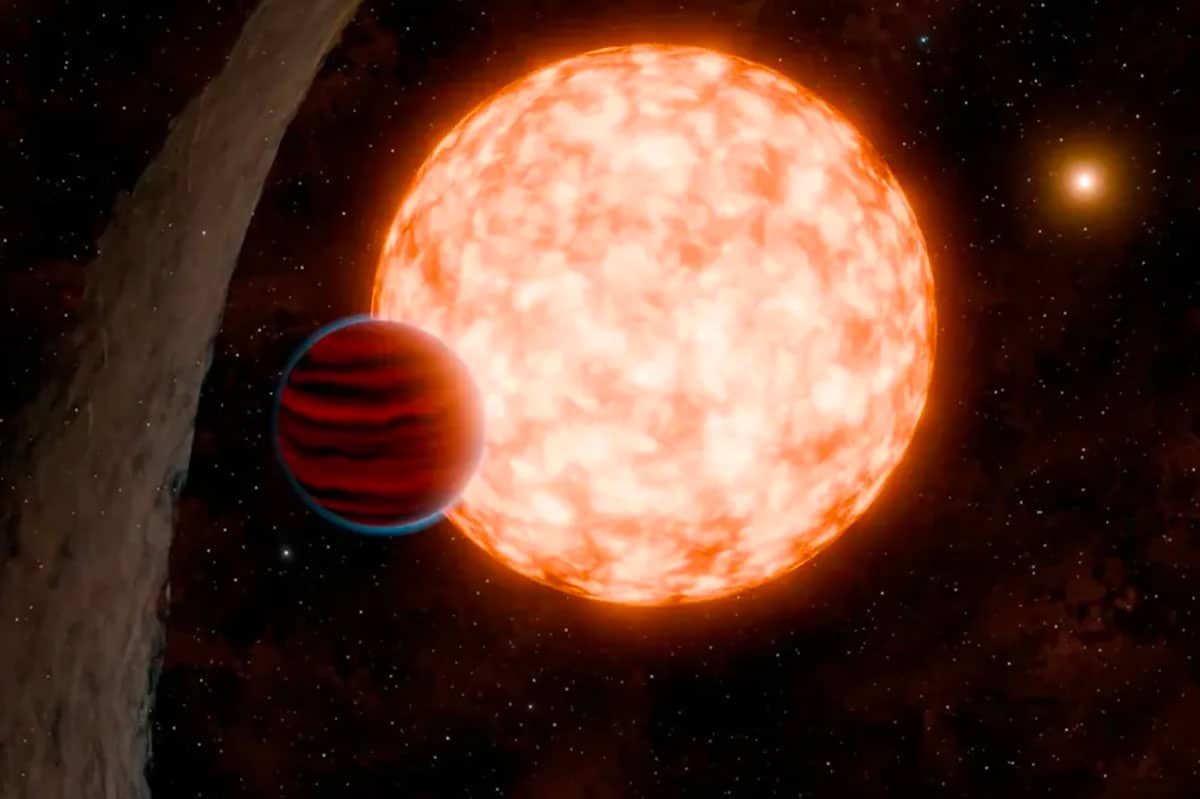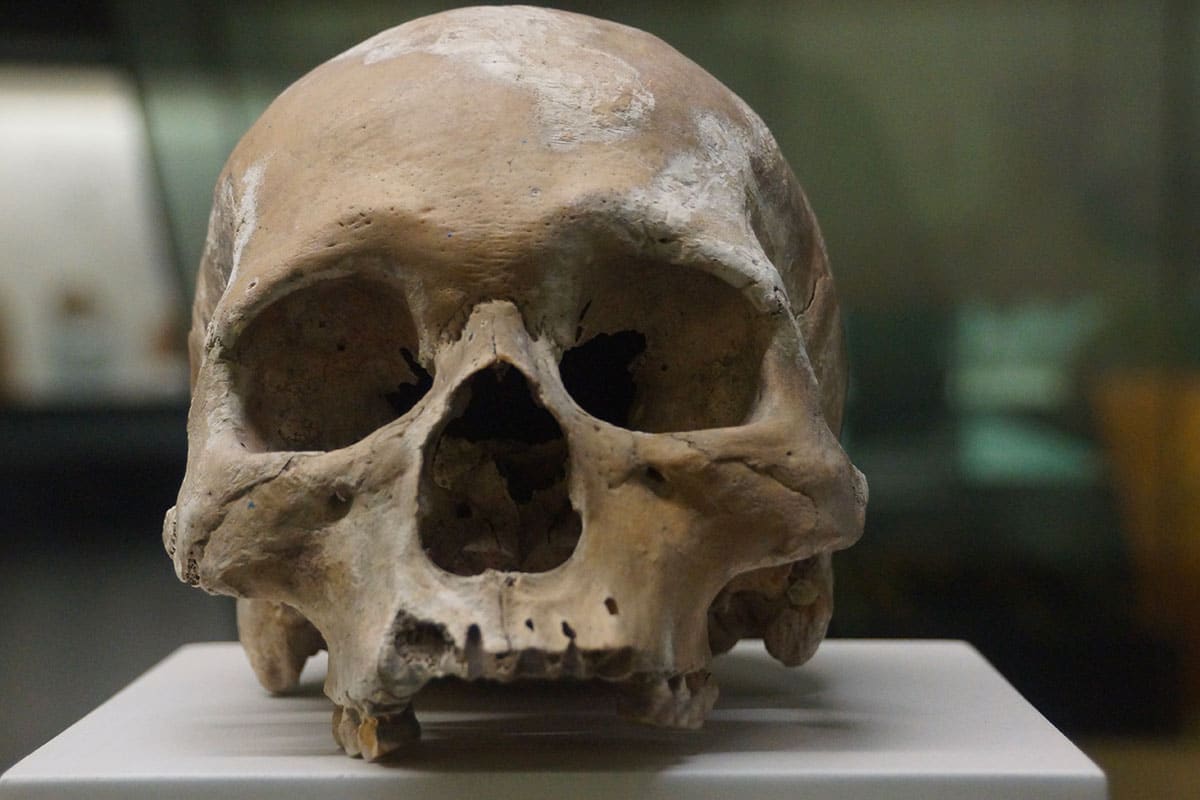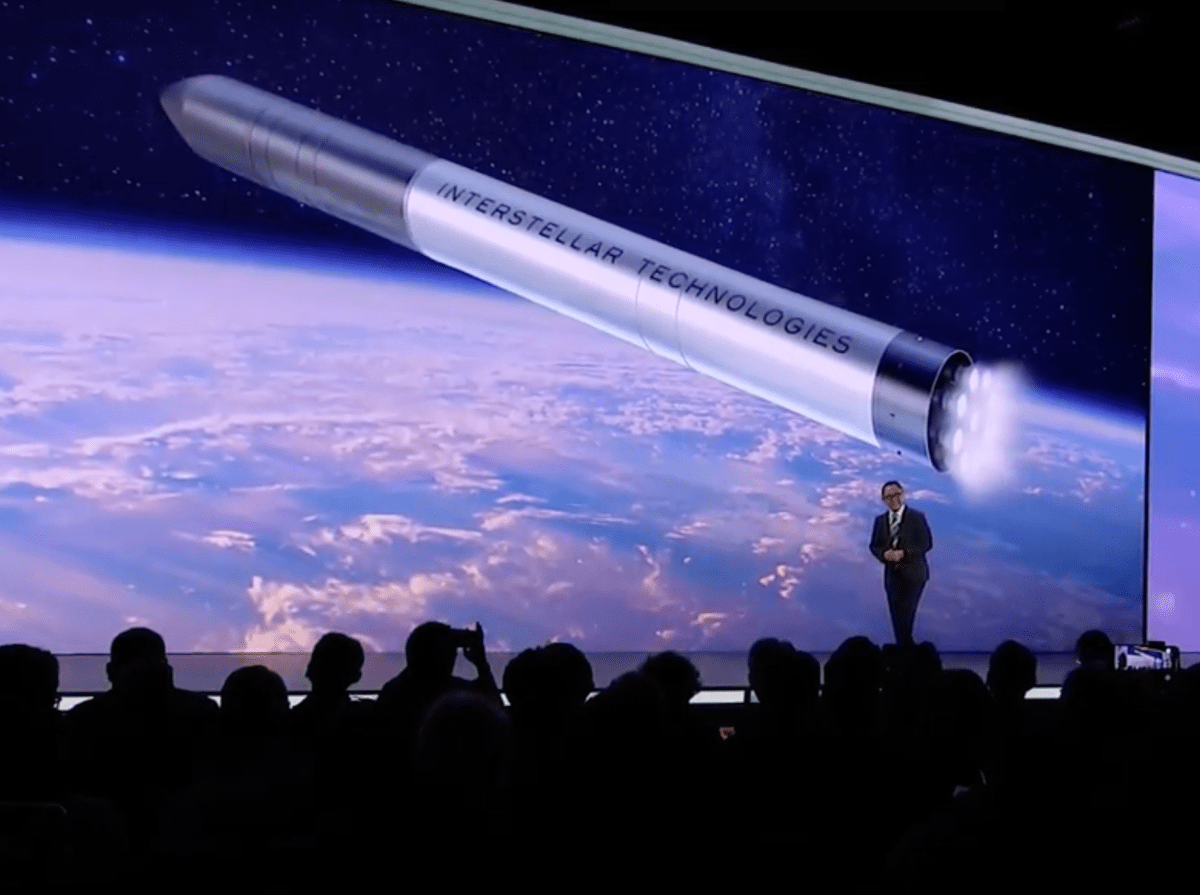By Jorge Casesmeiro Roger
Molecular biologist Dr. Richard H. Ebright, PhD is one of the twenty six world scientists who signed the Open Letter: “Call for a Full and Unrestricted International Forensic Investigation into the Origins of COVID-19”. A document released last March 4 by the Wall Street Journal and Le Monde that reignited the debate over the pandemic’s origin after the WHO-convened mission to Wuhan.
Board of Governors Professor of Chemistry and Chemical Biology at Rutgers University, Dr. Richard H. Ebright, PhD, is also Laboratory Director at the Waksman Institute of Microbiology and serves as project leader on two National Institutes of Health research grants.
Dr. Richard Ebright received his AB in Biology and his PhD in Microbiology and Molecular Genetics from Harvard University. He has more than one hundred sixty publications and more than forty issued and pending patents. He is member of the American Academy of Arts and Sciences, and a Fellow of the American Association for Advancement of Science, the American Academy of Microbiology, and the Infectious Diseases Society of America.
Dr. Ebright is a member of the Institutional Biosafety Committee of Rutgers University and the Antimicrobial Resistance Committee of the Infectious Diseases Society of America. He is also been a member of the Working Group on Pathogen Security of the state of New Jersey, and the Controlling Dangerous Pathogens Project of the Center for International Security Studies. He was a founding member of the Cambridge Working Group, which advocated for biosafety, biosecurity, and risk-benefit reviews for gain-of-function research on potential pandemic pathogens.
Dr. Ebright, you are one of the 26 scientific signers of the Open Letter that stopped the release of the WHO-convened mission Interim Report and has reopened the CoV-2 origin debate. Do you think the final report of this WHO/China joint team is going to shut down COVID origin controversy?
No.
The Open Letter explains in detail the structural and functional limitations of the WHO-China Wuhan collaborative team: exclusive Chinese field work, lack of complete access to lab installations or databases, consensus process in report making…
A credible investigation would have had Terms of Reference that: 1) Acknowledged the possibility of laboratory origin, 2) Ensured access of investigators to records, samples, personnel, and facilities at the Wuhan laboratories that handle bat SARS-related coronaviruses, 3) Enabled collection of evidence, not mere meet-and-greet photo-ops, 4) Authorized an investigation of months, not mere days. And 5) A credible investigation also would have had conflict-of-interest-free investigators, not persons who were subjects of the research and/or closely associated with subjects of the investigation.
You have said several times that this WHO mission was literally “a charade”.
Yes, its members were willing –and, in at least one case, enthusiastic– participants in disinformation.
The pre-negotiated “Terms of Reference” for the WHO study did not even acknowledge the possibility of a laboratory origin of the virus and did not even mention the Wuhan Institute of Virology (WIV), the Wuhan Center for Disease Control (CDC) or the Wuhan Institute of Biological Products.
Regarding the inspection personnel, at least one member of the WHO mission team, Ecohealth Alliance President Dr. Peter Daszak, seems to have conflicts of interest that should have disqualified him from being part of an investigation of the origins of the COVID-19 pandemic.
Yes. Daszak was the contractor who funded the laboratory at WIV that potentially was the source of the virus (with subcontracts from $200 million from the US Department of State and $7 million from the US National Institutes of Health), and he was a collaborator and co-author on research projects at the laboratory.
The Open Letter also lists the elements of “What a full investigation should look like”. So again, Dr. Ebright, if you were in charge of a forensic team to investigate in Wuhan the origins of the pandemic: what would you like to see first? What kind of questions would you ask and to who?
A credible forensic investigation would require access to records, samples, personnel, and facilities at WIV, the Wuhan CDC and the Wuhan Institute of Biological Products. It would entail inspection of electronic and paper records, inspection of freezer and refrigerator samples, environmental sampling of facilities, and confidential interviews with personnel–including previous and current construction, maintenance, janitorial, disposal, security, animal-facility, laboratory, and administrative personnel.
Whenever asked if this virus could have leaked from the Wuhan Institute of Virology, your answer has been: “Yes (…) This cannot and should not be dismissed”. A study on COVID origin of Dr. Steven Quay, another signer of the Open Letter, calculates the lab hypotheses to be a 99.8% probability.
At this point in time, there is no secure basis to assign relative probabilities to the natural-accident hypothesis and the laboratory-accident hypothesis.
But given the fact that lab leak is a possibility, what chance do you give for a natural zoonotic origin of this pandemic?
At this point in time, all scientific data related to the genome sequence of SARS-CoV-2 and the epidemiology of COVID-19 are equally consistent with a natural-accident origin or a laboratory-accident origin.
What would you say to the scientist who declined to comment on the Open Letter because it does not come from virologists?
The claim is unsound.
There were virologists among the signers of the Open Letter. There even were coronavirologists among the signers of the Open Letter.
More important, COVID-19 affects every person on the planet. Not just virologists.
Dr. Ebright, you are a microbiologist and molecular biologist, what light can you shed on this matter from your fields of expertise?
Microbiologists and molecular biologists are as qualified as virologists to assess the relevant science and science policies. Virology is a subset, not a superset, of microbiology and molecular biology. The sequencing, sequence analysis, cell culture, animal-infection studies, and other laboratory procedures used by virologists are not materially different from the procedures used by other microbiologists and molecular biologists.
I guess that is why the second point of the Open Letter research proposal is precisely to create a multidisciplinary team.
It is crucial that any team reviewing the issues include not only research scientists, but also biosafety, biosecurity, and science policy specialists.
What biological evidence regarding the structure and behaviour of SARS-CoV-2 points to a pure zoonosis? And what to the lab theory?
The genome sequence of the outbreak virus indicates that its progenitor was either the horseshoe-bat coronavirus RaTG13, or a closely related bat coronavirus.
RaTG13 was collected by Wuhan Institute of Virology in 2013 from a horseshoe-bat colony in a mine in Yunnan province, where miners had died from a SARS-like pneumonia in 2012, was partly sequenced by WIV in 2013-2016, was fully sequenced by WIV in 2018-2019, and was published by WIV in 2020.
Bat coronaviruses are present in nature in multiple parts of China.
Therefore, the first human infection could have occurred as a natural accident, with a virus passing from a bat to a human, possibly through another animal. There is clear precedent for this. The first entry of the SARS virus into the human population occurred as a natural accident in a rural part of Guangdong province in 2002.
But bat coronaviruses are also collected and studied by laboratories in multiple parts of China, including the Wuhan Institute of Virology.
Therefore, the first human infection also could have occurred as a laboratory accident, with a virus accidentally infecting a field collection staffer, a field survey staffer, or a laboratory staffer, followed by transmission from the staffer to the public. There also is clear precedent for this. The second, third, fourth and fifth entries of the SARS virus into human populations occurred as a laboratory accident in Singapore in 2003, a laboratory accident in Taipei in 2003, and two separate laboratory accidents in Beijing in 2004.
So for you there is still a fifty-fifty chance?
At this point in time, there is no secure basis to assign relative probabilities to the natural-accident hypothesis and the laboratory-accident hypothesis.
Nevertheless, there are three lines of circumstantial evidence that are worth noting.
Proceed, Doctor.
First, the outbreak occurred in Wuhan, a city of 11 million persons that does not contain horseshoe-bat colonies, that is tens of kilometers
from, and that is outside the flight range of, the nearest known horseshoe-bat colonies. Furthermore, the outbreak occurred at a time of year when horseshoe bats are in hibernation and do not leave colonies
Another one.
Second, the outbreak occurred in Wuhan, on the doorstep of the laboratory that conducts the world’s largest research project on horseshoe bat viruses, that has the world’s largest collection of horseshoe-bat viruses, and that possessed and worked with the world’s closest sequenced relative of the outbreak virus. The laboratory actively searched for new horseshoe-bat viruses in horseshoe-bat colonies in caves in remote rural areas in Yunnan province, brought those new horseshoe-bat viruses to Wuhan, and then mass-produced, genetically manipulated, and studied those new horseshoe-bat viruses, year-round, inside Wuhan.
A remarkable coincidence. The last one?
Third, the bat-SARS-related-coronavirus projects at the Wuhan Institute of Virology used personal protective equipment (usually just gloves; sometimes not even gloves) and biosafety standards (usually just biosafety level 2) that would pose very high risk of infection of field-collection, field-survey, or laboratory staff upon contact with a virus having the transmission properties of SARS-CoV-2.
The lab leak hypotheses, as raised in the Open Letter, should address four possible scenarios that do not imply genetic manipulation in a Gain-of-Function (GoF) experiment. But this chance cannot be excluded. Dr. Ebright, when the pandemic started you declared: “There’s absolutely nothing in the genome sequence of this virus that indicates the virus was engineered”. Would you reassert this today?
The genome sequence of this virus shows no signatures of human manipulation.
But Dr. Ralph Baric, who is considered the US leading expert in coronavirus, so he probably is the world one, says that is possible to engineer a virus in a lab without leaving a trace of the manipulation.
The fact that the genome sequence of this virus shows no signatures of human manipulation rules out the kinds of gain-of-function (GoF) research that leave signatures. But this does not rule out kinds of GoF research that do not leave signatures.
The chance that CoV-2 is a GoF virus does not imply that the leak could have occurred during a bioweapons program. Open Letter signatories do not address this scenario, that you firmly exclude. Be that as it may, Dr. Ebright, as a longstanding opponent of biological weapons proliferation (Nature: Jan. 24/02 & Jan. 15/12) and Founding Member of the Harvard “Cambridge Working Group Consensus Statement on the Creation of Potential Pandemic Pathogens (PPPs)”, does the current crisis demand a new debate and moratorium on these highly risky experiments, and this these time with a more international engagement?
Yes.
What went wrong for the Cambridge Working Group thesis during the 2014-2016 USA official moratorium and deliberative process on Gain-of-Function Research of Concern (GoFRoC)?
The Director of the National Institute of Allergy and Infectious Diseases (NIAID) and the Director of the National Institutes of Health (NIH) have systematically thwarted efforts by the White House, the Congress, scientists, and science policy specialists to regulate GoF research of concern and even to require risk-benefit review for projects involving GoF research of concern.
In 2014, the Obama White House implemented a “Pause” in federal funding for GoF research of concern. However, the document announcing the Pause stated in a footnote that: “An exception from pause may be obtained if head of funding agency determines research is urgently necessary to protect public health or national security”. Unfortunately, the NIAID Director and the NIH Director exploited this loophole to issue exemptions to projects subject to the Pause –preposterously asserting the exempted research was “urgently necessary to protect public health or national security”– thereby nullifying the Pause.
In 2017, the Trump Administration announced a Potential Pandemic Pathogens Control and Oversight (P3CO) Framework that implemented a requirement for risk-benefit review of GoF research of concern. However, the P3CO Framework relies on the funding agency to flag and forward proposals for risk-benefit review. Unfortunately, the NIAID Director and the NIH Director have declined to flag and forward proposals for risk-benefit review, thereby nullifying the P3CO Framework.
Proponents of GoF experiments with PPPs have won all the debates of the last decade. But I wonder why some of its most prestigious critics are keeping now such a low profile, when not a thunderous silence. And I am thinking of one of the leading organizers of the Cambridge Working Group: the Harvard epidemiologist Dr. Marc Lipsitch, who in 2018 was still warning that influenza GoF studies could provoke a pandemic on a scale never seen before.
The silence of some former leaders of the Cambridge Working Group has been disappointing.
It was, by the way, reading the cited Dr. Lipsitch paper that I came to know that perhaps the first experimental effort to create a PPP in a lab was the 2005 study titled: “Characterization of the reconstructed 1918 Spanish influenza pandemic virus”. Dr. Lipsitch wondered about it: “Whether it was wise to construct a virus that was historically associated with the worst pandemic in modern history”. Do you remember this concrete GoF study? Are you aware, fifteen years after, of any positive outcome of it? In conclusion, Dr. Ebright: was it wise to do it?
I consistently have stated that: “This was research that should not have been performed” (NYT: Oct. 05/05 & Jan. 29/06).
And no, the work has not yielded information useful for preventing pandemics or responding to pandemics.
Drs. Imperiale and Casadevall, both Cambridge Work Group Board Members, echoed last summer: “Most experts who have been studying and discussing preparedness agree that the source of the pathogen does not significantly change the nature of the response. Is that right, Dr. Ebright, or maybe the outcome of knowing CoV-2 origin could have saved lives?
Understanding the origin of SARS-CoV-2 is not crucial for responding to the present pandemic. But it is crucial –absolutely crucial– for preventing future pandemics.
Regarding prevention, it was precisely Dr. Peter Daszak, with a renewed grant from the NIH, now to target deadly viruses in South Asia, who stated in August 2020: “We’re going to work in remote parts of Malaysia and Thailand to get to the front line of where the next pandemic is going to start”. Now, though Dr. Daszak is not openly cited in the March 4 Open Letter, he is clearly the WHO team member with a more biased vision and unresolved conflict of interest when it comes to inspecting a possible leak in the Wuhan Institute of Virology. So going back: if the origin of Covid-19 was a lab accident, GoF, or in between, this would change the narrative of the whole pandemic, and so the measures that should be taken to prevent another one: like, for instance, keeping crackpot scientists far away from deadly viruses. Am I wrong?
You are not wrong.
Thank you for your attention, Dr. Ebright.
May 23, 2021 ADDENDUM
Regarding the NIH Director’s May 19, 2021 “Statement on misinformation about NIH support of specific ‘gain-of-function’ research” [Note 1]
Dr. Richard Ebright has declared to this interviewer:
“The statement by the NIH Director is demonstrably false. The NIH Director either is uninformed, or is misinformed, or is seeking to mislead (any one of which should be a disqualification for continuation in his position).
The NIH Director now even is denying that the 2015 Nature Medicine paper by UNC and WIV reporting construction of a novel chimeric coronavirus with spike gene from a bat SARS-related coronavirus with genomic backbone from SARS-CoV –a paper that for six years has been deemed to epitomize the highest-risk subset of gain of function research– was gain of function research” [Note 2].
Notes
Note 1 https://www.nih.gov/about-nih/who-we-are/nih-director/statements/statement-misinformation-about-nih-support-specific-gain-function-research#.YKXFl1MJD8c.twitter
Note 2 The paper cited by Dr. Ebright is: “A SARS-like cluster of circulating bat coronaviruses shows potential for human emergence” (Nature Medicine, Nov 9, 2015). https://www.nature.com/articles/nm.3985 Further context on it provided at: https://www.nature.com/news/engineered-bat-virus-stirs-debate-over-risky-research-%201.18787
If this article was useful to you please consider sharing it with your networks.










Leave a Comment